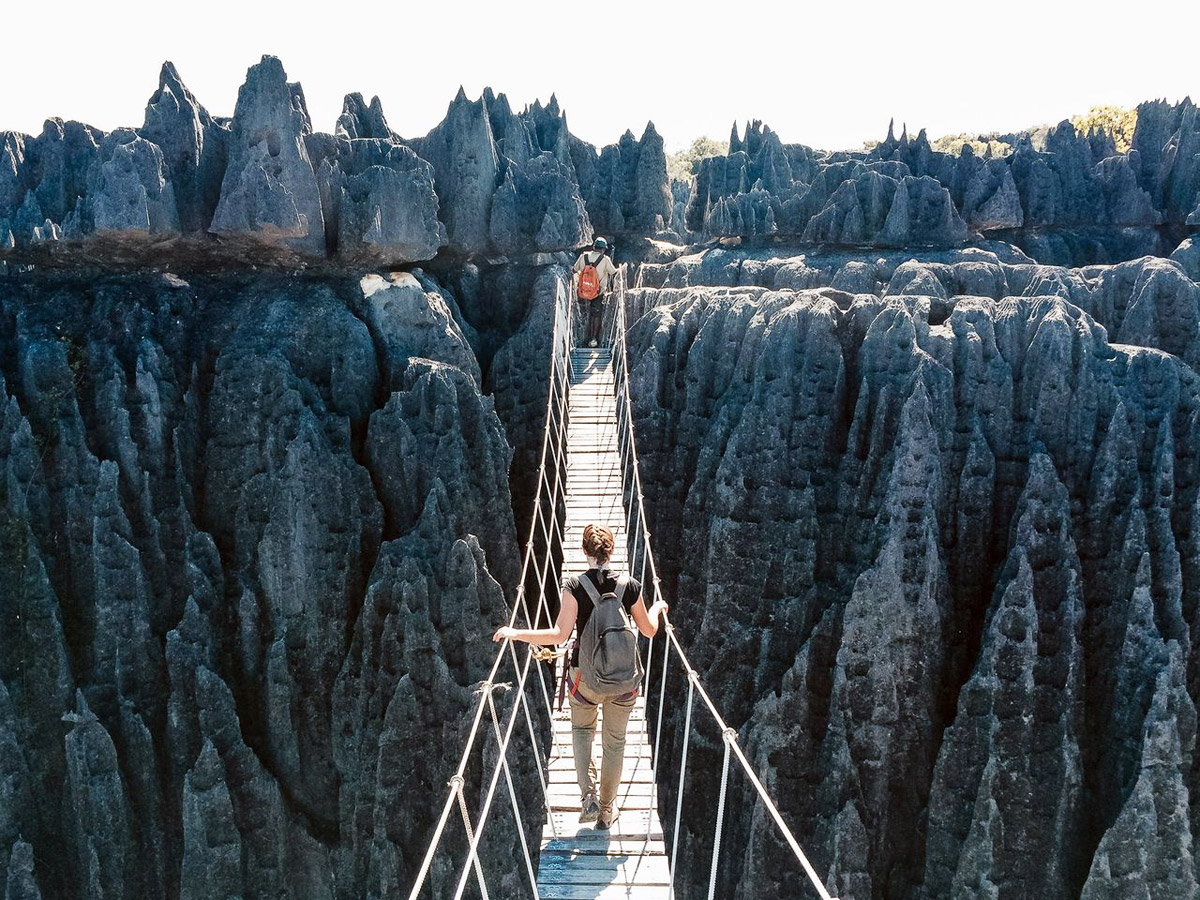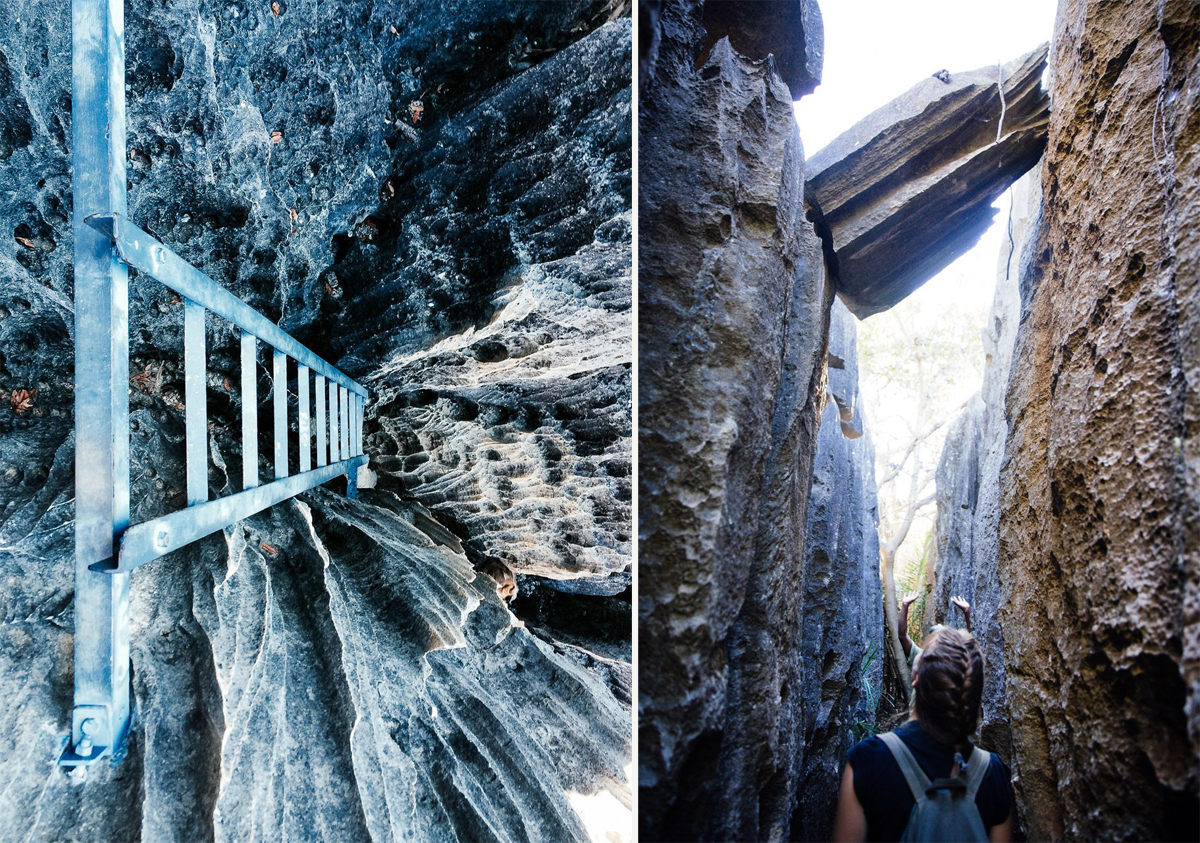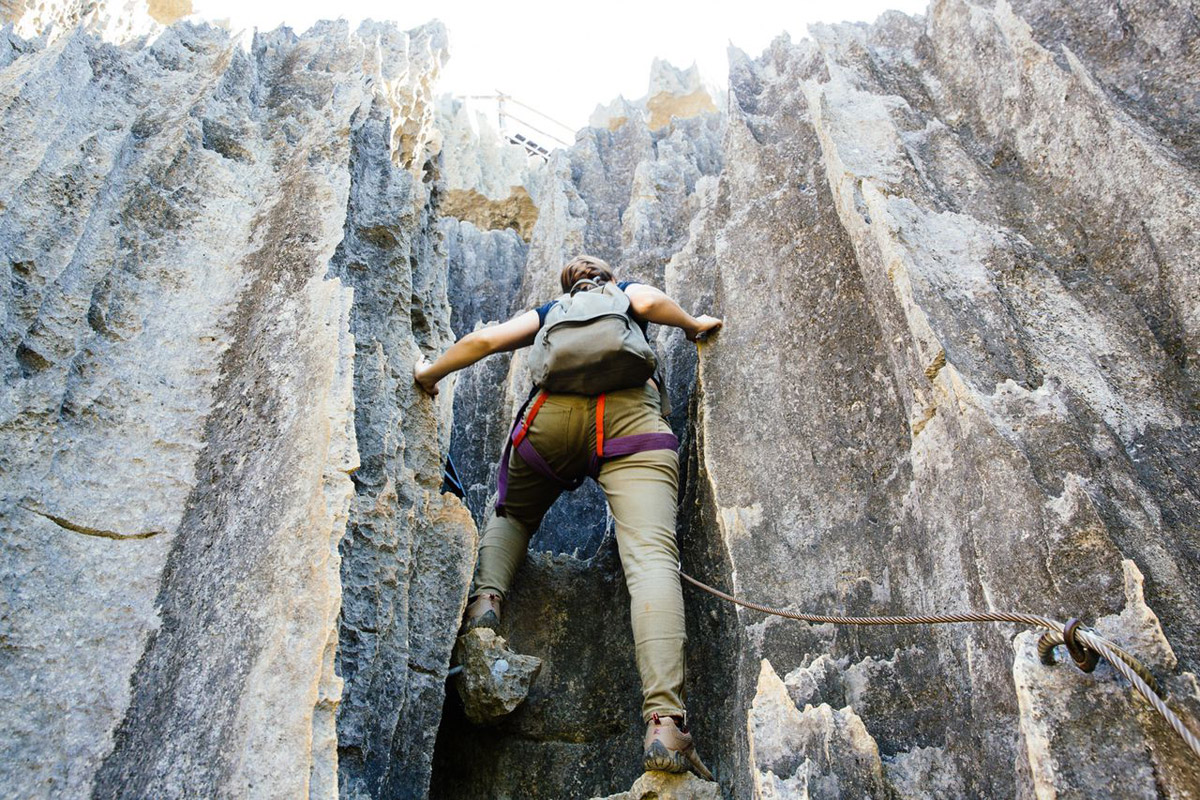Off Piste: Tsingy de Bemaraha National Park
A 600-mile labyrinth of towering limestone in Madagascar’s otherworldly forest


The amount of Jurassic-era limestone rising above the trees of western Madagascar’s Tsingy de Bemaraha National Park—hundreds of miles worth of jagged rock—gives the landscape the look of a formidable fortress. Lofty spires, twisted pinnacles and narrow ridges of razor-sharp stones reach up to 150 feet in the air, with deep crevices and caves interlaid within. The world’s largest stone forest is an awe-inspiring sight, and one that’s a bit alien too. Researchers believe rising groundwater caused massive fissures in porous limestone beds and years of erosion created the dramatic vertical and horizontal pattern-work of the rocks.

Tsingy, the Malagasy word for this particular stone phenomenon that loosely translates as “walking on tiptoes,” has become a walled castle for the species that dwell there too, many of which are unique to the area. In just the past 10 years, never-before-seen plants, bats, frogs and chameleons have been identified there—and rare primates such as the fist-sized mouse lemur thrive in and around the rocks. Due to the hot, harsh climate and the somewhat impenetrable Tsingy itself—which cuts through skin, clothing, shoes, even rock-climbing equipment with ease—studying the flora and fauna is difficult. The fact is, if you visit you just might be the first person to ever glimpse the bright lizard that darted past.

Simply getting to the Tsingy is a task for the adventurous, as the road leading there redefines rough: a 4WD vehicle is an absolute essential. The park is open only during the dry season of April through November; attempt a visit any later and the ragged, pot-holed 80km dirt track to the entrance becomes impassable. But once you’re in, you might have the place to yourself—some years, tourists have numbered merely in the hundreds. The park itself has been open to visitors just 16 years. Mandatory guides offer tours through two sections, the Grande and Petite Tsingys.

The four-hour trek through the Grande Tsingy is particularly rewarding, as you travel through a forest, scramble over fallen rocks, squeeze through caves and finally clip the carabiner of your park-provided waist harness into steel cables strung through the stone to ascend to several viewing platforms. Metal ladders up the sheer sides and a shaky bridge over a particularly deep canyon are thrilling, vertigo-inducing highlights.
Park entrance fees are approximately $11 per person for one day; $16 for two days. Guide fees depend on the routes chosen, but run between $10 to $25 per group. Onsite camping with basic facilities is available. For more information, see have a look at Tsingy de Bemaraha National Park online.
Photos by Tanveer Badal
Off Piste encourages exploration. With each feature we’ll introduce the people, products and places that make life outside the city possible and life in the city more down to earth.












